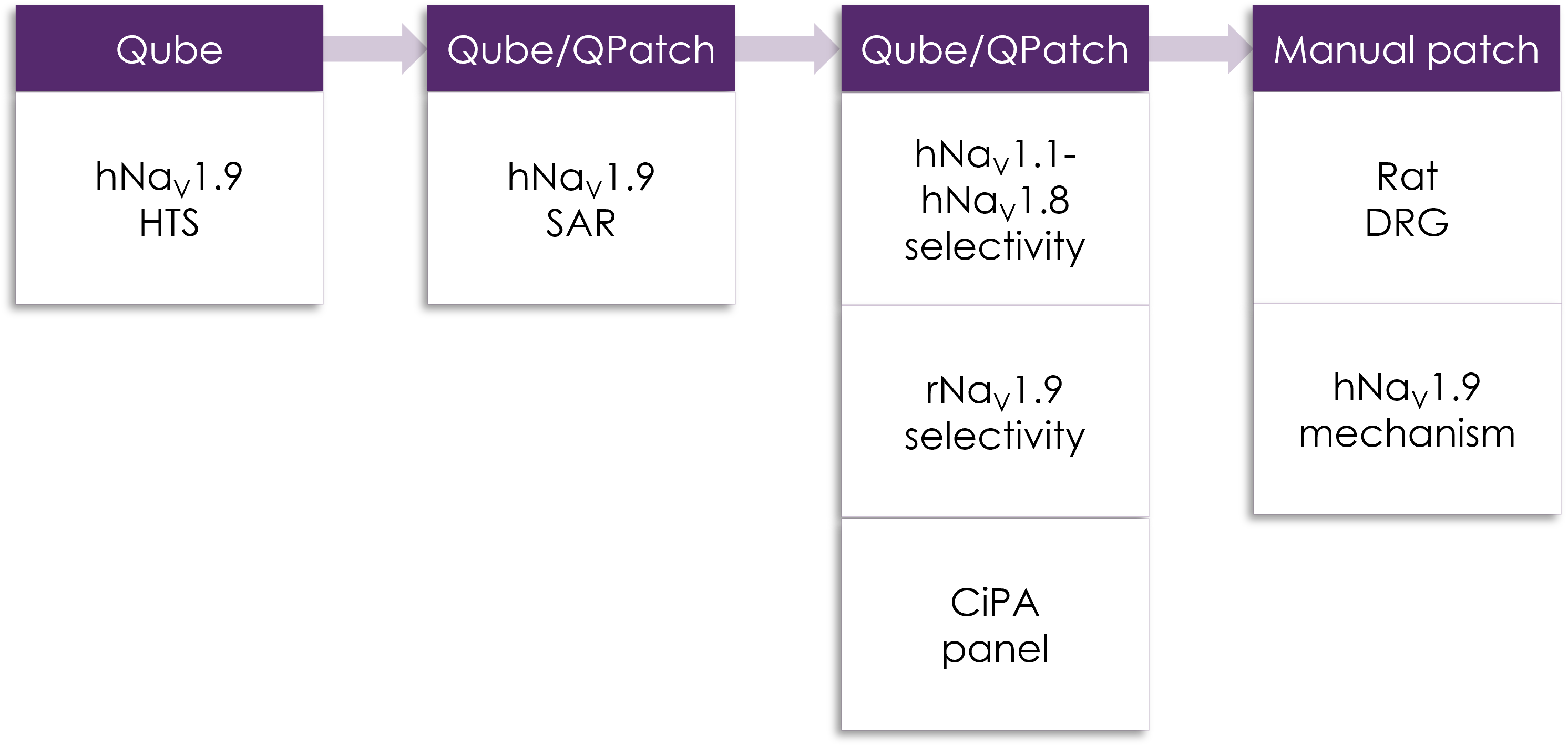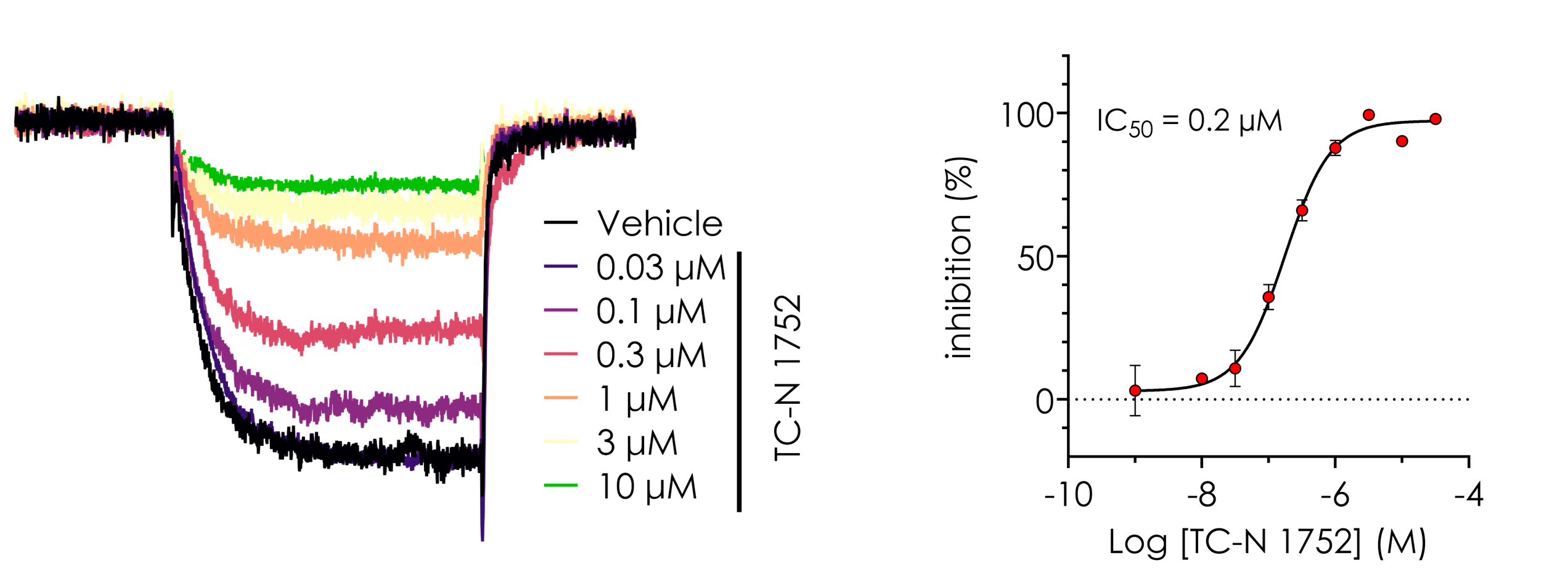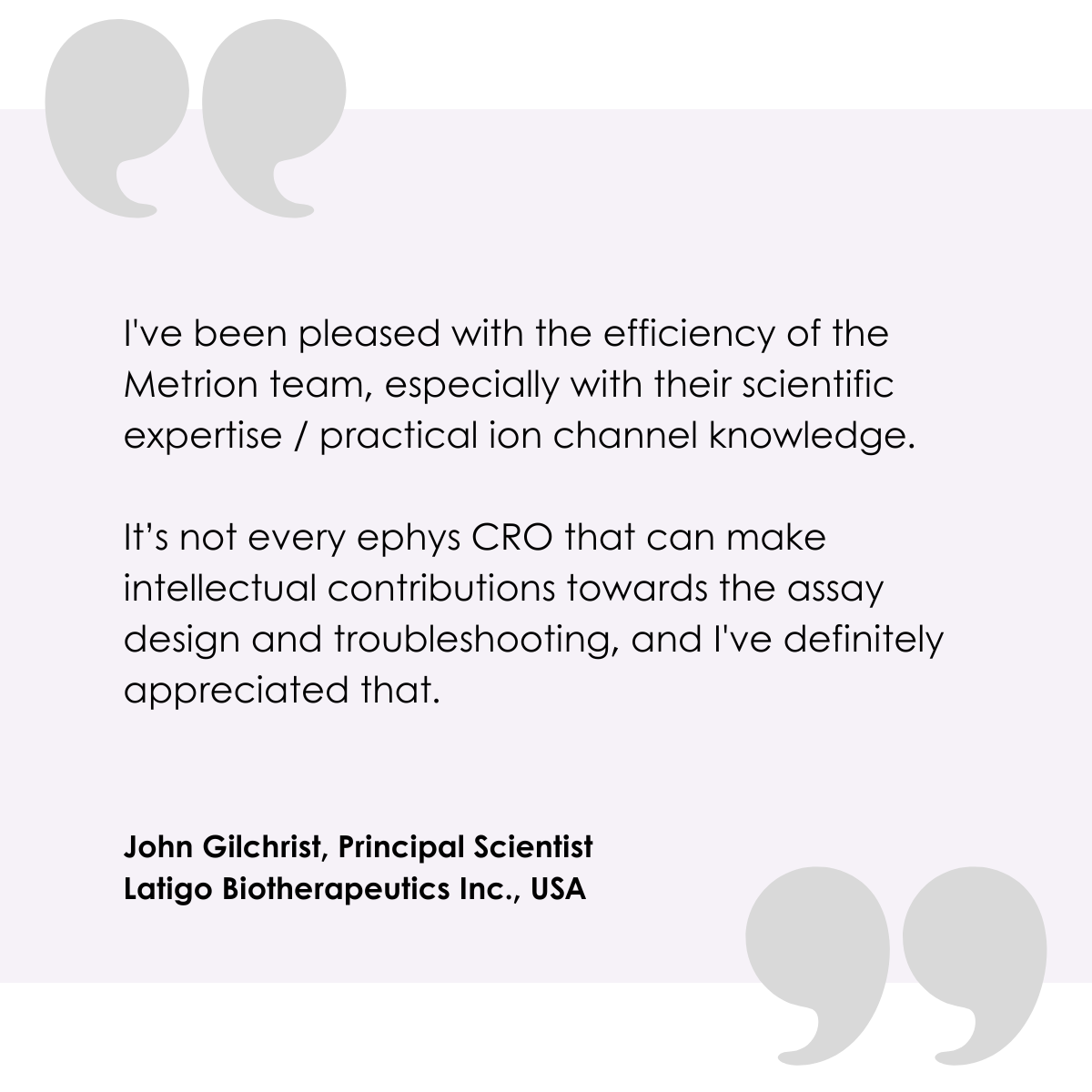Boost screening efficiency for pain targets
The global chronic pain treatment market was valued at $88.2 billion in 2023 and is projected to reach $173.4 billion by 2033, growing at a 7.0% CAGR. Neuropathic pain, a major segment of this market, represents around 31.6% of the total.1
Ion channels are a major class of drug targets for modulating pain transmission and controlling chronic pain. The voltage-gated sodium channel, NaV1.9, has been identified as a critical component of pain signalling. While NaV1.9 holds great promise as a non-opioid pain target, the discovery and development of new chemical entities has been hampered by the availability of robust cellular reagents suitable for high-throughput electrophysiology.
Metrion has addressed this challenge with the development of robust stably expressing NaV1.9 cell lines (human and rat) which have been validated on the QPatch 48 and Qube 384 electrophysiology platforms. This enables:





